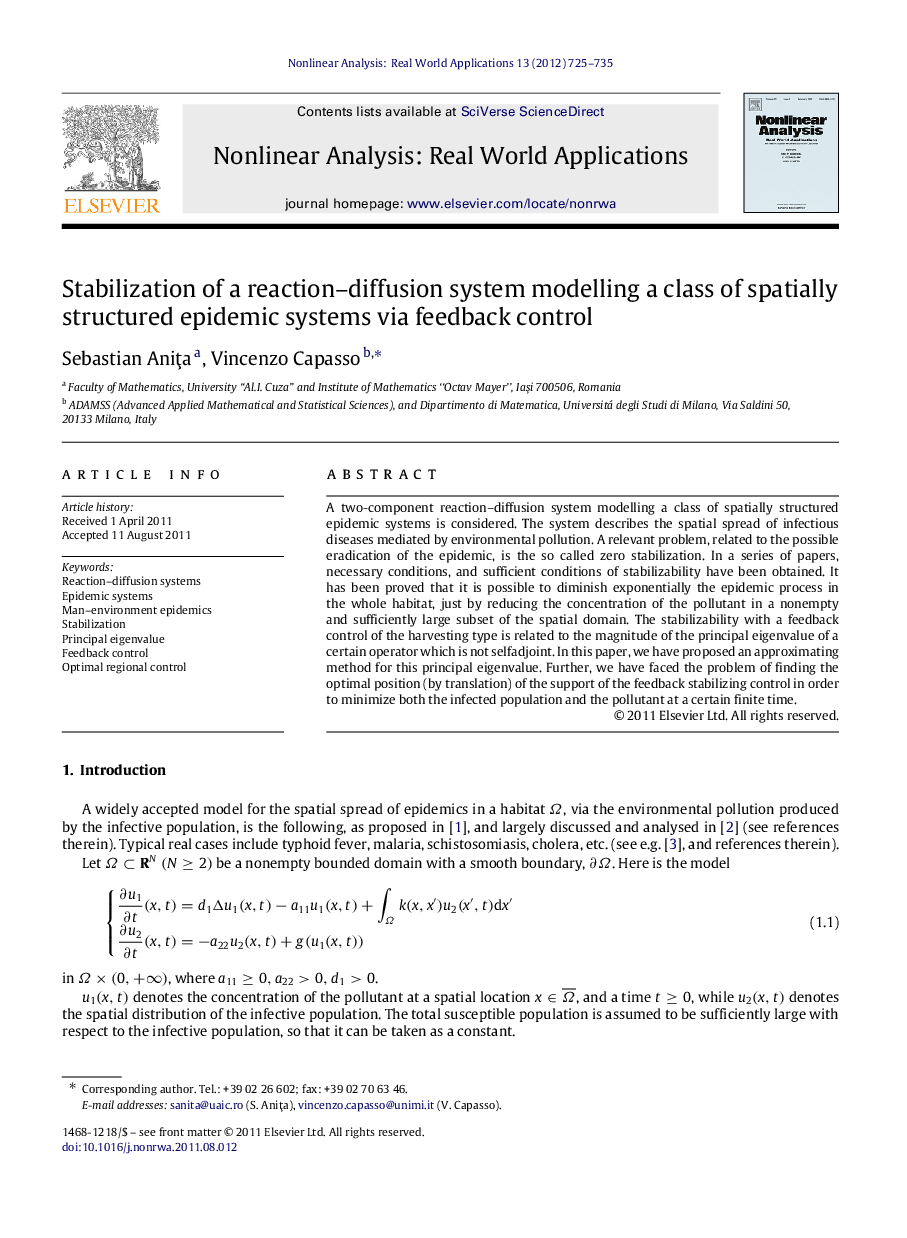| Article ID | Journal | Published Year | Pages | File Type |
|---|---|---|---|---|
| 837486 | Nonlinear Analysis: Real World Applications | 2012 | 11 Pages |
A two-component reaction–diffusion system modelling a class of spatially structured epidemic systems is considered. The system describes the spatial spread of infectious diseases mediated by environmental pollution. A relevant problem, related to the possible eradication of the epidemic, is the so called zero stabilization. In a series of papers, necessary conditions, and sufficient conditions of stabilizability have been obtained. It has been proved that it is possible to diminish exponentially the epidemic process in the whole habitat, just by reducing the concentration of the pollutant in a nonempty and sufficiently large subset of the spatial domain. The stabilizability with a feedback control of the harvesting type is related to the magnitude of the principal eigenvalue of a certain operator which is not selfadjoint. In this paper, we have proposed an approximating method for this principal eigenvalue. Further, we have faced the problem of finding the optimal position (by translation) of the support of the feedback stabilizing control in order to minimize both the infected population and the pollutant at a certain finite time.
